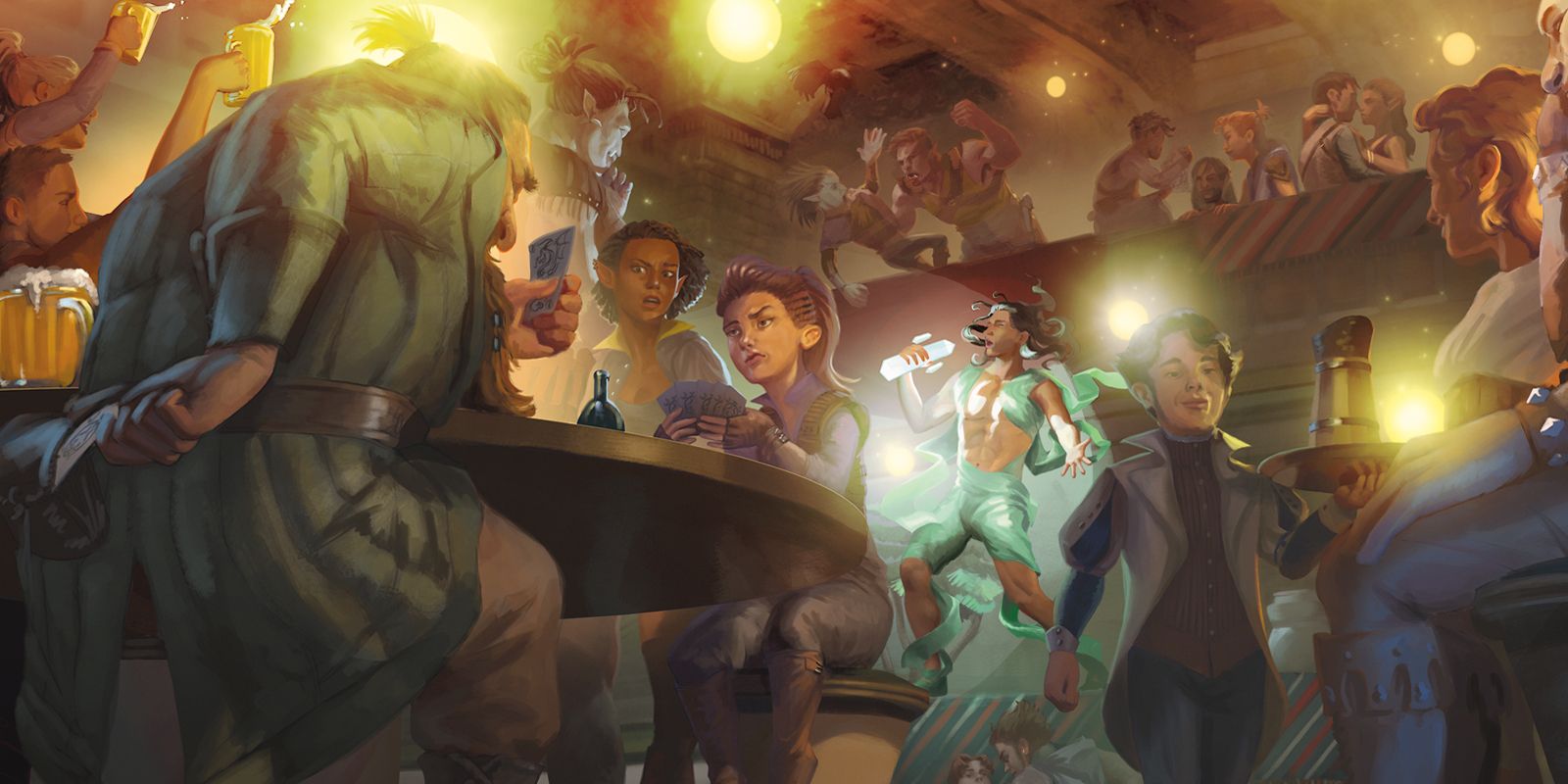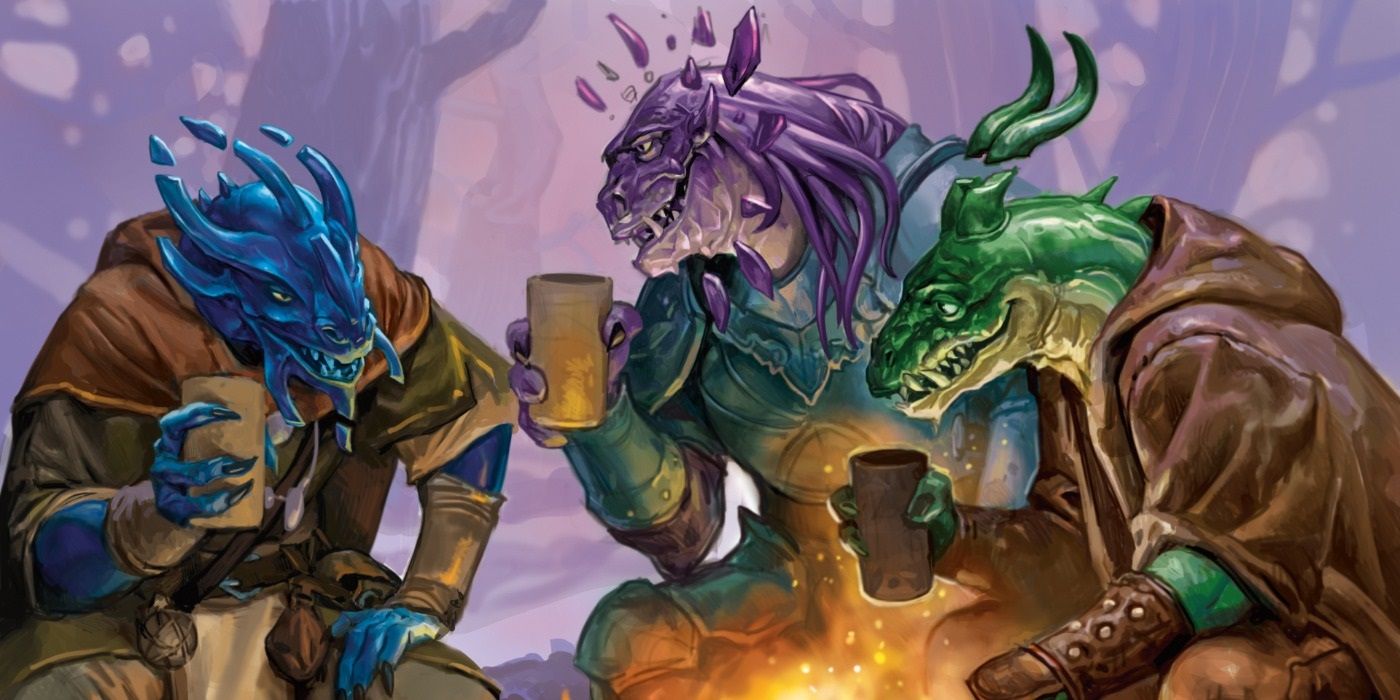There are many popular locations in Dungeons & Dragons that are used as waypoints between narrative, combat, or quests. One of the most popular, and easiest to integrate, is the tavern. Taverns are boisterous spaces frequented by both locals and travelers, giving DMs a convenient place for a party to convene, or to introduce an NPC important to a campaign's story. However, due to the ease of use, taverns have an unfortunate reputation as a cliché plot device. While cutting the tavern out entirely may seem like a way to avoid tropes and stereotypes in a Dungeons & Dragons campaign, there are actually a number of ways to put a fresh spin on the iconic location.
Taverns in D&D have a fairly similar description across most campaigns. They are usually less crowded in the daytime and become heavily populated at night. A small-town tavern is less likely to be a big space with numerous patrons, and a tavern in the city could be crammed to bursting under the right circumstances. Dungeons & Dragons Bards can usually be found in taverns playing music or giving useful information via story, while the patrons listen and purchase drinks or food. It is often a place for low-handed deals or for finding an unusual patron among the adventurers and vagabonds.
However, altering the standard description of D&D's taverns can be a big step to avoiding stereotypes. Instead of a non-assuming building with small windows, perhaps the tavern is new and openly inviting, with an outdoor area for bards to play as the evening moves in. Depending on the environment, the building could be removed entirely, with the D&D "tavern" space becoming an outdoor amphitheater including an open-air bar. Altering the building itself presents new opportunities for the narrative, and could attract the attention of different tavern attendees, changing up the crowds the party may encounter.
Dungeons & Dragons Taverns Don't Need To Sell Alcohol
The DM can also remove numerous D&D tavern clichés by changing the location's menu. Taverns are often depicted as a location to get into alcoholic mischief. Players can challenge each other to drinking contests, create inebriated disruptions with NPCs, or engage in drunken flirting. However, these interactions can quickly become boring, especially if the same tropes are present in multiple campaigns. To create new social challenges, it could be that the tavern sells only food or specializes in drinks like tea and coffee. This will require players to think differently about how certain situations are approached and prevent the use of alcohol as a crutch in character interactions between D&D party members and NPCs.
Taverns can also vary in atmosphere depending on the patrons frequenting the location. While it isn't uncommon for a D&D tavern to be filled with more unruly or dangerous characters, changing the stereotype to a tavern specifically for the wealthy could present an interesting challenge for the party. It could be they must dress and act a specific way to fit in with other patrons, or they could attempt to blend in with staff to remain discreet. It could also be a space where D&D skills like pickpocketing and snooping could be particularly rewarding, as the patrons of the Dungeons & Dragons tavern would likely have access to valuable items and special information.


